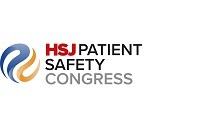The must-read stories and debate in health policy and leadership.
- Today’s mental health insight: These scandals would not be tolerated in the acute sector
- Today’s CCG setback: Eight-way merger blocked by local opposition
Despite publishing data on live waiting lists for most specialties, NHS England and Improvement does not publish data on the number of people waiting, following a referral to cancer services.
What it does publish are waits for people who have already been treated. However, the public data does not give a picture of those currently waiting. This information is of particular public interest in the post pandemic world.
HSJ has now uncovered data which for the first time gives a view of the cancer waiting list following the first covid-19 wave.
The total waiting list on 13 September was around 58,000. This includes people without a decision to treat. This is an increase compared to August when the waiting list was 50,000.
According to the data, as of 13 September there were almost 6,400 people who were waiting more than 100 days following a referral for cancer. Of these 472 people were categorised as “decision to treat”, meaning they have cancer and are awaiting treatment.
If compared to data for August the overall waiting list has increased substantially, while the number waiting,104, did decrease. This suggests NHS England’s phase three strategy of focusing on the people waiting more than 104 days is beginning to take effect.
Topline data on regional performance showed North East and Yorkshire and London had the most people waiting more than 104 days.
Comparing data for the number of people waiting without a decision to treat, over the same period, revealed an increase, which suggests the NHS is having more trouble with diagnostic capacity than it is treatment.
NHS England and Improvement have previously refused to share live waiting lists for cancer, despite requests from HSJ.
The fact that this data exists but isn’t being made public, despite the waiting times for other specialties, raises questions about transparency.

























No comments yet